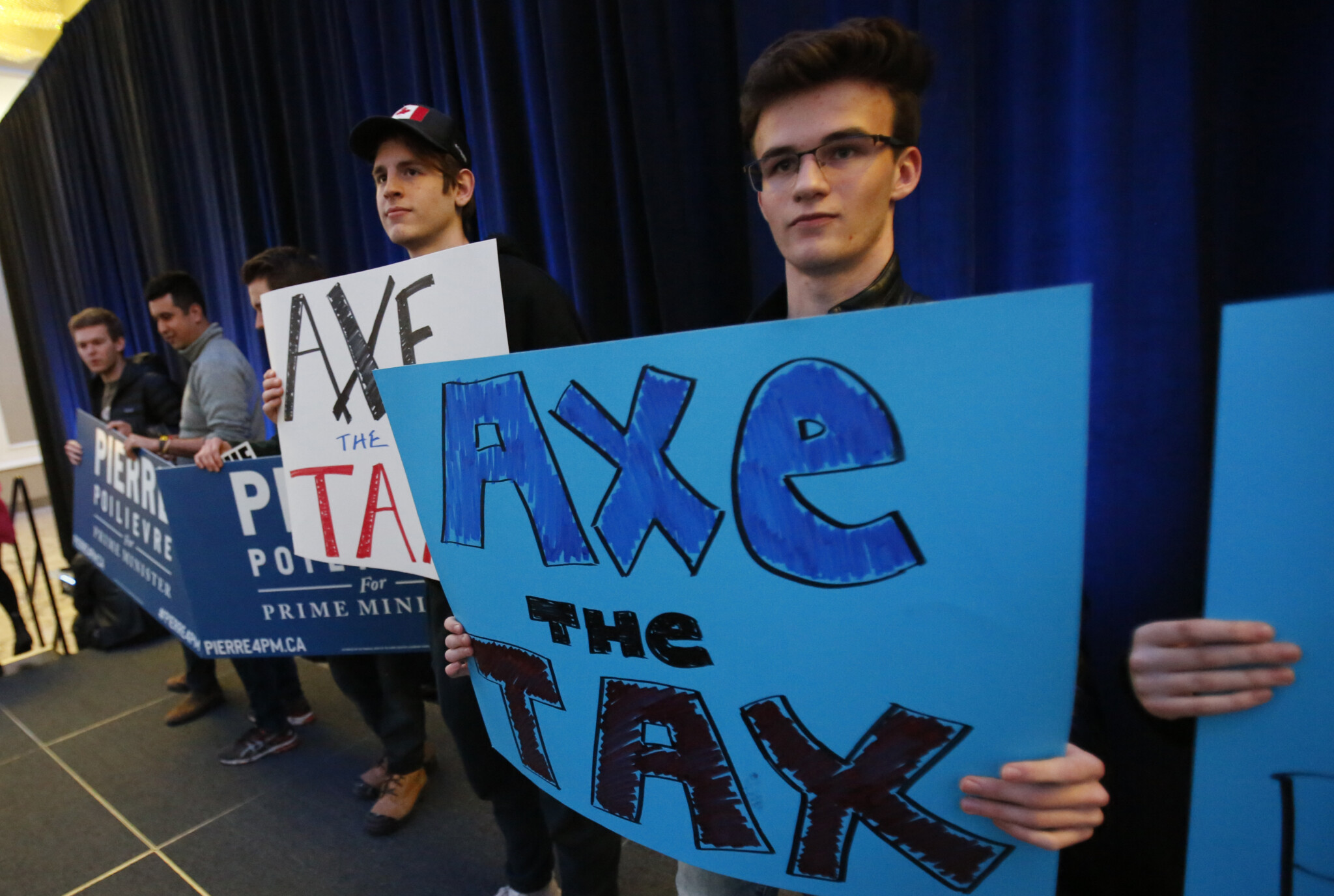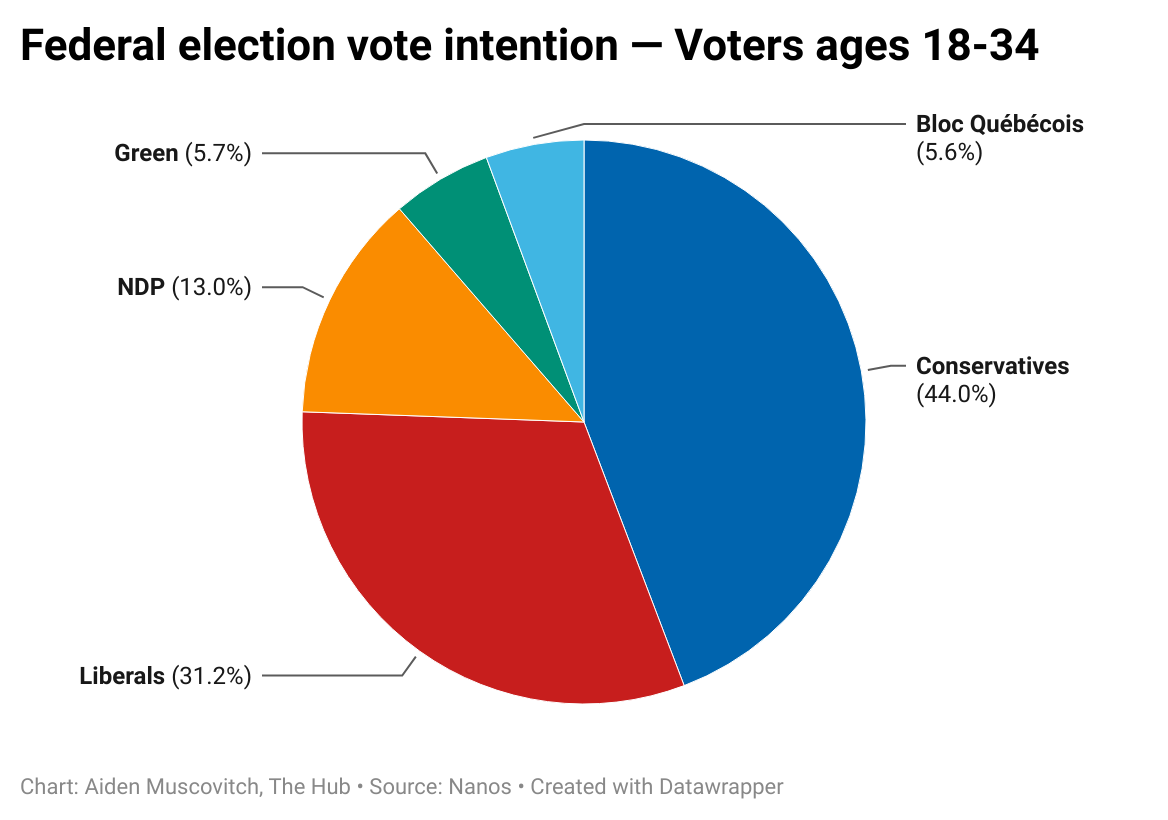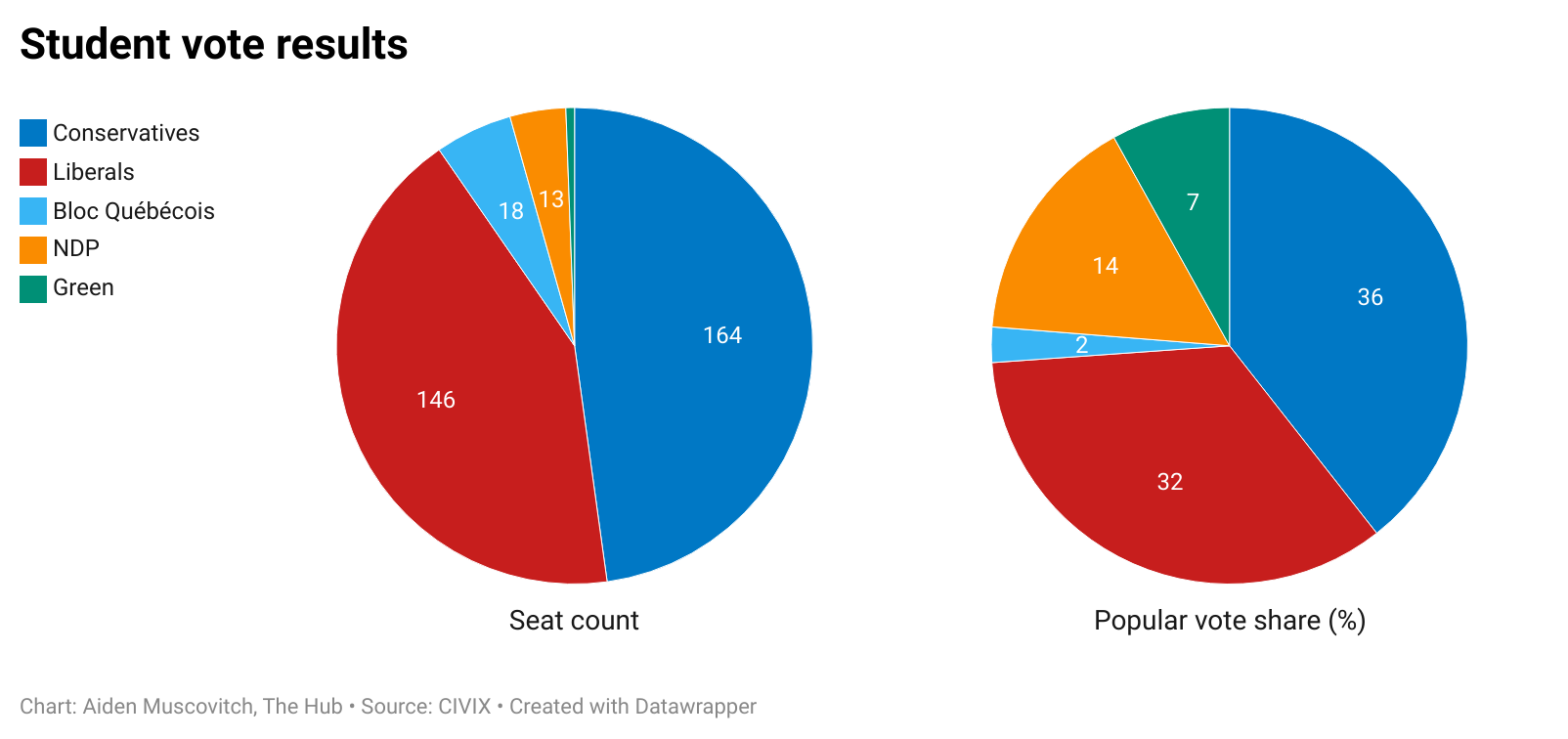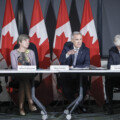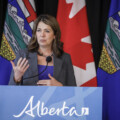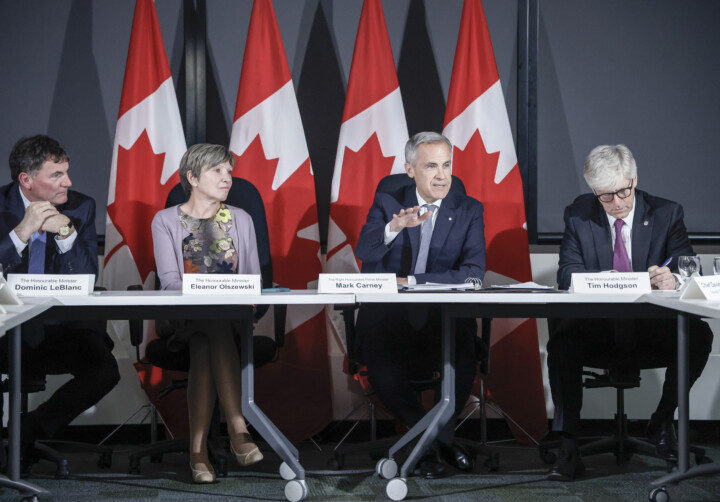The Conservative Party’s notable gains with younger Canadians have prompted calls for a concerted effort to build on this progress—to, in effect, consolidate its support with Gen Z voters. This has led to renewed discussion about whether the party should revive its youth wing. I think it should.
The Progressive Conservative Youth Federation (PCYF), founded in 1946, was the Progressive Conservative Party of Canada’s official youth wing. It gave Canadian conservatives between the ages of 14 and 25 (though before 1996, the age limit was 35) a dedicated say in party affairs and a vote at national conventions to pick party leaders and establish policy. Members of the PCYF were even able to have their own youth wing in many riding associations and run PC Party-affiliated college and university campus organizations.
But after the Conservative Party was founded out of the merger of the PC Party and the Canadian Alliance in 2004, delegates at the CPC’s founding convention in Montreal voted down the creation of a formal youth organization for the new party. This decision led to the abolition of the PCYF on the grounds that party members and supporters ought to be of equal adult status, youth or otherwise, and thus, youth required no special status.
In subsequent years, there have been efforts to revisit this decision. Most notably, resolution C-114 was tabled at the Conservative convention in 2011: a proposal to create the Young Conservatives of Canada wing for members under age 30. According to a delegate who attended the convention, C-114 failed by a ratio of nine votes to one. Opponents of the resolution claimed it would push youth into second-tier standing and split the party.
Pierre Poilievre—who at the time was the 32-year-old MP for Nepean–Carleton and the parliamentary secretary to the minister of transport, infrastructure and communities in Stephen Harper’s majority government—was one of the several MPs who opposed the creation of a youth wing within the CPC. At the time of the vote in 2011, Poilievre would have been young enough to be a member of the PCYF himself according to pre-1996 rules.
Notwithstanding the argument that all members of the CPC should be on equal standing, I contend that a youth wing is a good idea. It can attract young people into politics. It can give them a platform to speak their minds at conventions and contribute to the party’s policy process.
In fact, I’d even argue that it provides them equal standing. Combining young and older Conservatives as it is currently risks the greater party disregarding or not being exposed to the perspectives of younger members due to the louder voices of older, more established individuals within the party.
Former president of the PCYF, Tasha Kheiriddin, now a columnist at the National Post, advocated for the resolution to be passed in 2011, largely to widen the party’s future talent pool. It’s notable, for instance, that past PCYF members included Brian Mulroney, Joe Clark, and Jean Charest.
Reviving a Conservative youth wing is not only a strategic imperative but also could be a proven method for generating innovative, bold policies that resonate with younger voters. This matters because young people are turning to the Conservatives.
For example, the Conservatives outpaced the Liberals by 44 percent to 31 percent among 18 to 34-year-old Canadians, according to a Nanos poll conducted a few days before election day in late April.This shift in youth vote intention has been documented in several news outlets and publications in Canada and abroad and commented on throughout the election by major Canadian pollsters.
In the Student Vote run by CIVIX in partnership with Elections Canada, nearly a million young Canadians in elementary, middle and high schools across Canada, who are largely too young to have voted in the last election, elected a Conservative minority government. The CPC won 164 seats to the Liberals’ 146 seats. The Conservatives also won the popular vote at 36 percent, while the Liberals took 32 percent. It was the first time in recent history that students elected a different party than the one actually elected federally.
The top two most important policy issues to student voters were the cost of living and housing. The Conservatives focused much of their 2025 policy platform on the cost of living and housing. As such, many young people are closely aligned in their policy priorities with the Conservatives. Young people want more housing, a lower cost of living, more freedom and less unnecessary taxation. They could drive the party to go deeper on the issues that matter to them, ultimately benefiting the party come election time.
For instance, when the PCYF was still active in 1996, they proposed a 10 percent income tax cut. The PCYF was successful in having this policy adopted by the Progressive Conservatives as part of their platform ahead of the 1997 federal election. Young Conservatives could directly influence the party platform in ways aligned with their generation’s policy priorities. Allowing young people to impact policy directly will give them more of a reason to vote Conservative and, as it has proved in the past, provide the party with forward-thinking, future-proof policies that could be major selling points during a campaign for voters of all ages.
The Liberals certainly understand the value of promoting the voices of their young supporters and have been in power for 10 years, and look to still be for the next four. The Young Liberals of Canada (YLC) is the official youth wing of the Liberal Party and is the largest youth political organization in Canada. Over their nearly century-long history, several prominent Liberal politicians were members of the YLC, including Jean Chretien, Paul Martin, John Turner, and Michael Ignatieff. If you can believe it, some conservative politicians, including Stephen Harper and Jason Kenney, even got their start in the YLC.
Recent Liberal governments have implemented several Young Liberal policy proposals, which became many of their trademark initiatives, such as the legalization of same-sex marriage and recreational marijuana usage. Here, young Liberals’ voices were not segregated; they were amplified. The policies endorsed and presented by young people drove the youth vote home en masse. The Justin Trudeau-led Liberals in 2015 were the first party since 1997 to have overwhelmingly won the youth vote, gaining 45 percent of young Canadians’ votes compared to 25 percent for the NDP and 20 percent for the Conservatives.
After an election loss in April, the Conservatives need a new competitive advantage to get them over the hurdle the Mark Carney-led Liberals put in their road to victory. One key pathway to electoral gains is to galvanize the nation’s young people and have them contribute to the policy conversation.
The current political landscape demands a reinvigorated approach, and a Conservative youth wing could be part of that. There will be no better forum for getting young Conservatives involved in their country’s future, and the future of the Conservative Party, than a revived, robust youth wing: the Young Conservatives of Canada.
